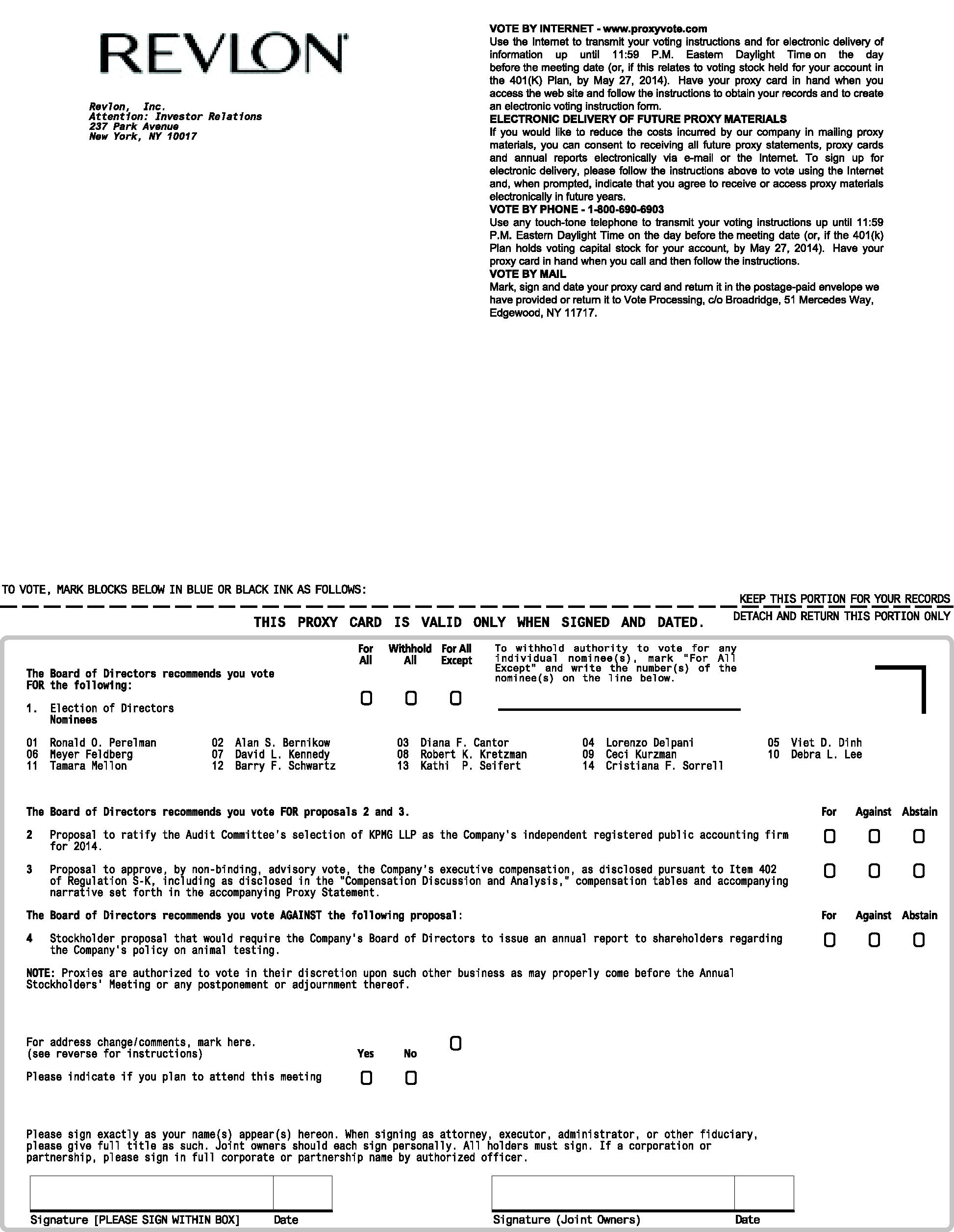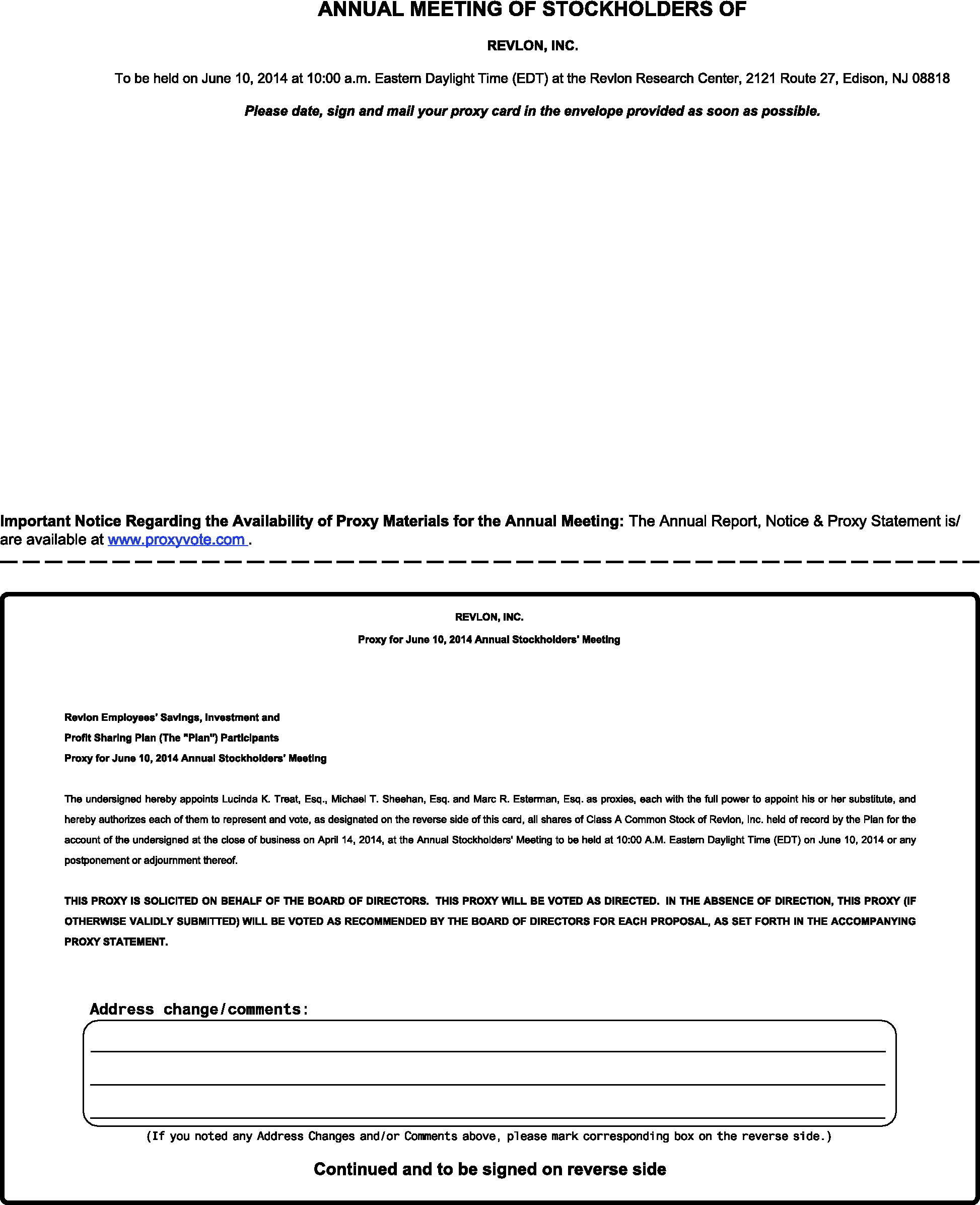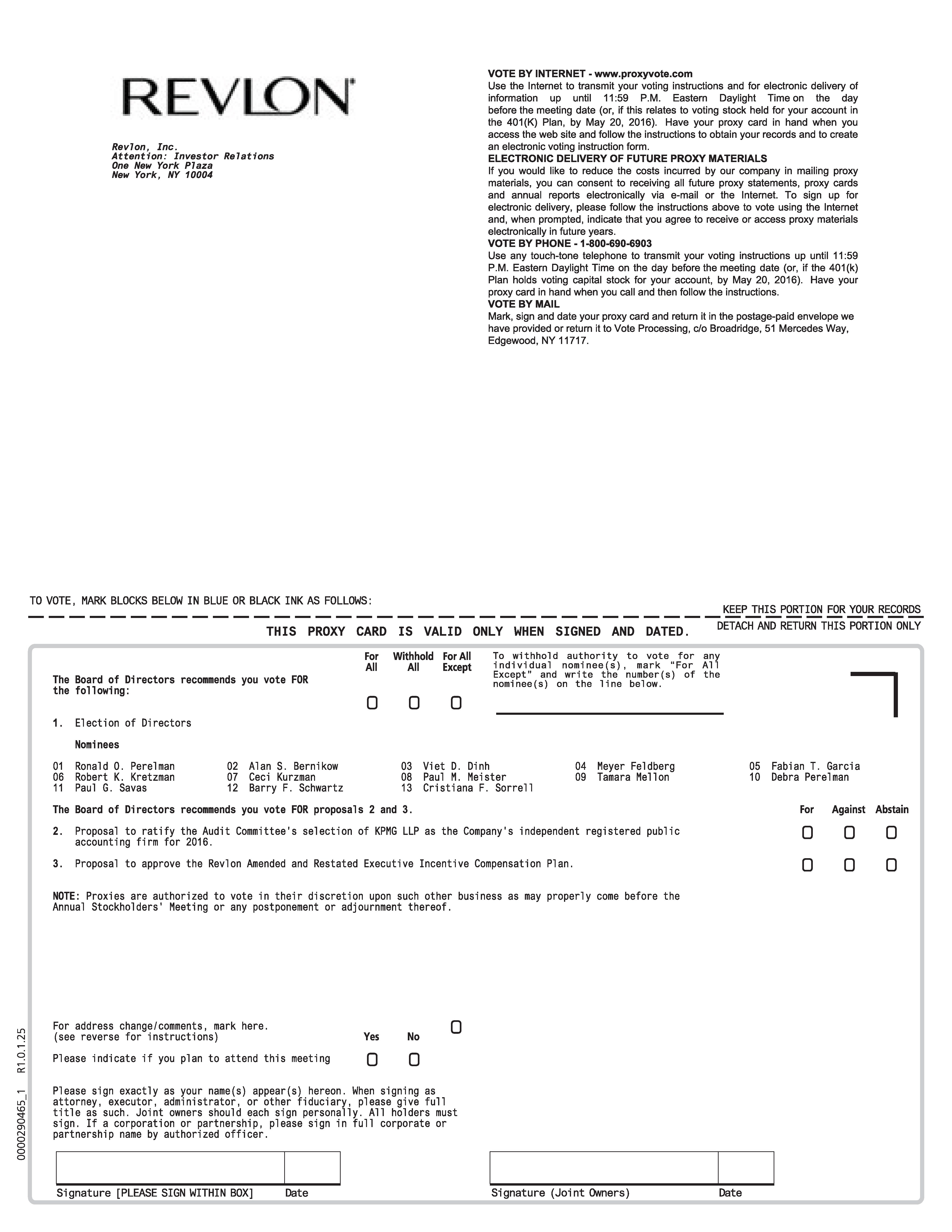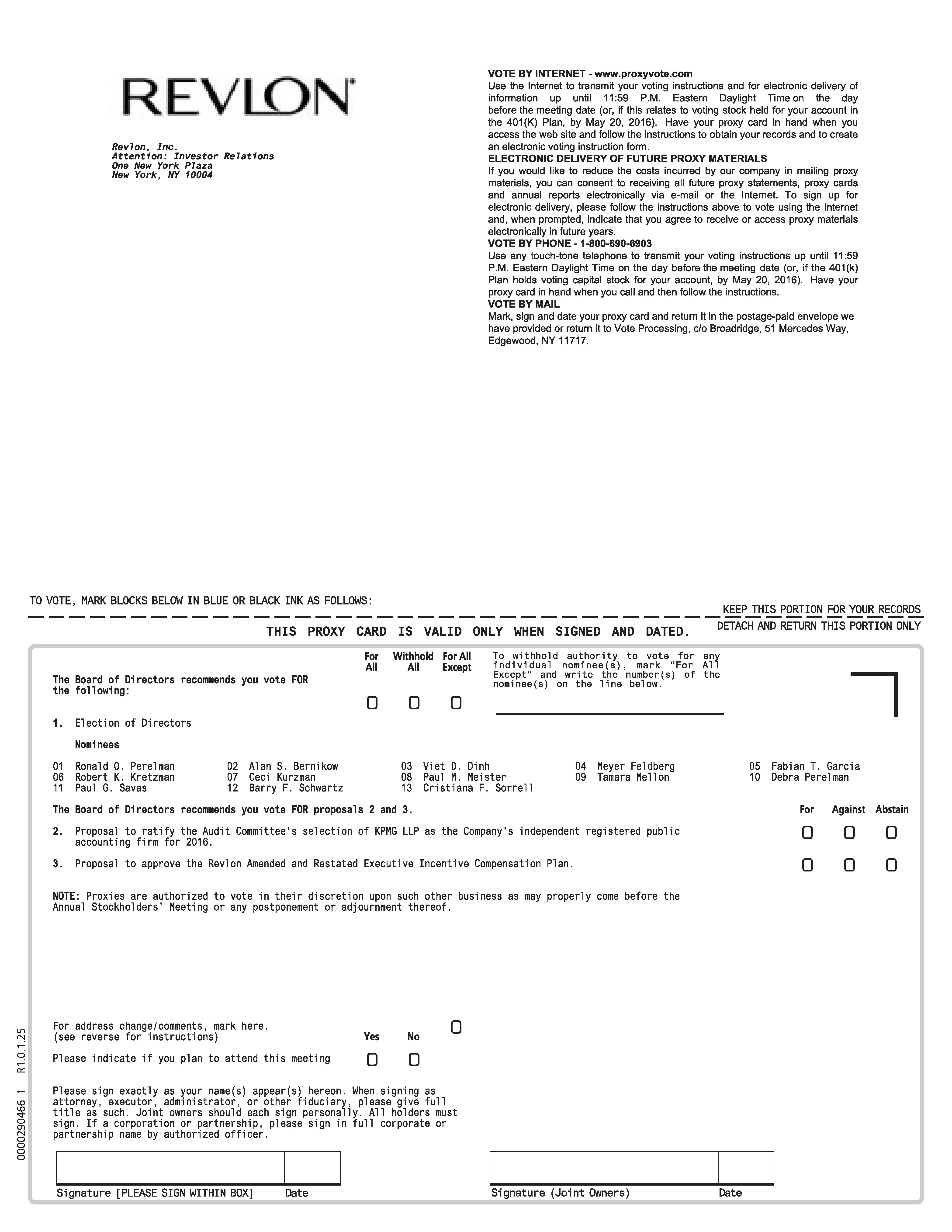restricted shares held by themhim shall immediately vest and become fully exercisable. None of the Named Executive Officers holdsMr. Pieraccioni does not hold any unvested stock options oroptions. For information on unvested shares of restricted stock other than Mr. Alletto, who holds 120,000 shares of restricted stock, which were granted to him upon commencement of employment, all of which remain unvested as ofheld by the date of this Proxy Statement.Name Executive Officers, see the “Summary Compensation Table” and “Outstanding Equity Awards at Fiscal Year-End,” above.
Under the Incentive Compensation Plan, if, in connection with a “change of control,” a successor entity assumes the LTIP, does not terminate the LTIP or provides participants with comparable LTIP benefits, then theoutstanding LTIP awards remain payable in accordance with their terms. Otherwise, upon a “change of control,” LTIP awards related to the performance period when theany “change of control” event occurredoccurs are to be paid at target on a pro-rated basis (based on the number of days elapsed)elapsed with respect to the applicable LTIP performance period) within 60 days following such “change of control,” and (ii) LTIP awards related to prior performance periods as to which the respective performance objectives were achieved, but for which payments remain outstanding, are to be paid within 60 days following any such “change of control.”
Messrs. Ennis, Elshaw and Berns ceased employment with the Company and Messrs. Kennedy and Kretzman retired prior to the date of this Proxy Statement, and not following a “change of control.”
The estimated aggregate total of benefits upon a “change of control” and subsequent termination if Mr. DelpaniPieraccioni had been terminated on December 31, 20132015 would have been approximately $3,430,365,$5,512,256, consisting of the following: (a) two$1,200,000, representing 2 times his $600,000 annual base salary on December 31, 2013;2015; (b) two$1,229,220, representing 2 times his average 5-year bonusbonus; (c) approximately $15,900, representing the cost of $637,000 (representing his 2013 bonus); (c) two2 years of contributions under the Company'sCompany’s 401(k) Plan of approximately $15,300;Plan; (d) approximately $87,750$54,000 in respect of two2 years of profit sharing contributions under the 401(k) Plan; (e) approximately $4,954, representing the cost of 24 months of life insurance coverage, at acoverage; (f) $60,000, representing 24 months of car allowance; (h) $20,000, representing 24 months of tax preparation and financial counseling allowance; (i) approximately $89,226, representing the cost of approximately $8,050; (f) 24 months of group medical and dental insurance coverage, at a costcoverage; and (j) $2,838,956, representing the fair market value attributable to the accelerated vesting of approximately $28,265; (g) 24 monthshis 101,974 shares of useunvested restricted stock that were outstanding as of a Company automobile at a costDecember 31, 2015 (excluding the 32,082 restricted shares that he was granted on February 25, 2016), based on the NYSE closing market price per share of approximately $48,000; and (h) 24 months of tax preparation and financial counseling, at a cost of approximately $19,000.$27.84 on December 31, 2015. Upon a “change of control” without the successor entity assuming or otherwise continuing the terms of the LTIP, Mr. DelpaniPieraccioni also would be entitled to the payout of the remaining unpaid portion of his previously earned LTIP awards, to be paid at target on a pro-rated basis, in the aggregate amount as of December 31, 2013$833,333, consisting of: (i) $333,333, representing the remaining two-thirds portion of $83,333,his $500,000 2014 Transitional LTIP (based on its 2-year performance period (i.e., 2014 and 2015)) (which award was in fact paid in March 2016); (ii) $333,333, representing two-thirds of his $500,000 2014 LTIP (based on 2 years completed of the 3-year performance period (i.e., 2014, 2015 and 2016)); and (iii) $166,667, representing one-third of his Transitional$500,000 2015 LTIP pro-rated for time in role during 2013 and adjusted for 2013 Company performance, which was earned for 2013 based upon the Compensation Committee's determination(based on 1 year completed of the degree3-year performance period (i.e., 2015, 2016 and 2017)).
Mr. Simon
Mr. Simon ceased employment with the Company on February 29, 2016, and not following a “change of Company achievement of its 2013 performance targets and thatcontrol.”
As per Mr. Simon’s employment agreement, the executive had earned a “target” or better performance rating for each such year.
The estimated aggregate total of benefits that would have been payable upon a “change of control” and subsequent termination if thereafter Mr. AllettoSimon had been terminated on December 31, 20132015 would have been approximately $5,837,655,$5,209,749, consisting of the following: (a) two$1,200,000, representing 2 times his $600,000 annual base salary on December 31, 2013;2015; (b) two$915,048, representing 2 times his average 5-year bonus of $573,350 (representing his 2013 bonus);bonus; (c) twoapproximately $15,900, representing 2 years of contributions under the Company'sCompany’s 401(k) Plan of approximately $15,300;Plan; (d) approximately $68,850$54,000 in respect of two2 years of profit sharing contributions under the 401(k) Plan; (e) approximately $4,954, representing the cost of 24 months of life insurance coverage, at a cost of approximately $6,316;coverage; (f) 24 months of group medical and dental insurance coverage, at a cost of approximately $26,289; (g)$60,000, representing 24 months of car allowance at a cost of approximately $30,000; (h)allowance; (g) $20,000, representing 24 months of tax preparation and financial counseling at a cost ofallowance; and (h) approximately $19,000; and (i)$2,106,514, representing the fair market value attributable to the accelerated vesting of his restricted stock award of 120,00075,665 shares of Class A Common Stock, which had a fair market value on such date of $2,995,200unvested restricted stock, based on the NYSE closing market price per share of $24.96$27.84 on December 31, 2013.2015. Upon a “change of control” without the successor entity assuming or otherwise continuing the terms of the LTIP, Mr. AllettoSimon also would be entitled to the payout of the remaining unpaid portion of his previously earned LTIP awards, to be paid at target on a pro-rated basis, in the amount as of December 31, 20132015 of $833,333, consisting of: (i) $333,333, representing 100% of the second tranche of his $500,000 representing his 20132014 Transitional LTIP not subject to pro-ration or adjustment for 2013 Company(based on 2 years completed of the 2 1-year performance pursuant toperiods (2014 and 2015)); (ii) $333,333, representing 2-thirds of his employment agreement.$500,000 2014 LTIP (based on 2 years completed of the 3 1-year (2014-2016) performance periods); and (iii) $166,667, representing one-third of his $500,000 2015 LTIP (based on one year completed of the 3 1-year (2015-2017) performance periods).







